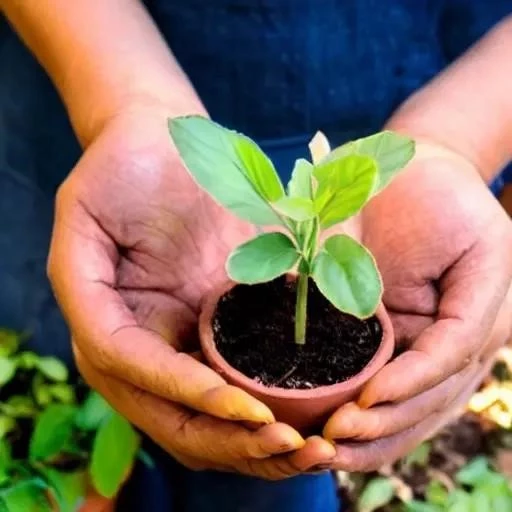The urban sprawl, with its concrete jungles and bustling thoroughfares, often seems an unlikely canvas for verdant growth. Yet, across India, a silent revolution is blossoming. From the sun-drenched balconies of Mumbai to the serene terraces of Gorakhpur, an ever-increasing number of enthusiasts are discovering the profound joy and sustainable benefits of cultivating their own green sanctuaries. This isn’t merely a hobby; it’s a vibrant lifestyle choice, transforming cramped spaces into flourishing ecosystems and reconnecting individuals with the therapeutic rhythms of nature. The sheer diversity of India’s climates, from humid coastal regions to arid plains and temperate hills, presents both unique challenges and unparalleled opportunities for gardeners to experiment and innovate, truly making every patch of soil a testament to their dedication and ingenuity.
As we navigate the complexities of modern life, the simple act of nurturing a plant offers an incredibly effective antidote to stress, fostering a sense of accomplishment and calm. Imagine plucking fresh, organic herbs for your evening meal, or gazing upon a cascade of vibrant bougainvillea, all grown within the confines of your own home. This dream is becoming a widespread reality, propelled by accessible knowledge and a burgeoning community spirit. Whether you aspire to grow exotic succulents, fragrant pink jasmine, robust Monstera plants, or even your own pomegranates and paan leaves, India’s diverse flora and supportive online communities are paving the way for gardening success, promising bountiful harvests and aesthetic beauty.
| Key Principles for Thriving Gardens in India | |
|---|---|
| Climate Adaptation | Select native and seasonal plants best suited for local temperatures, humidity, and rainfall. Consider shade-loving varieties for intense summers and ensure heat-tolerant species like Bougainvillea and Song of India are prioritized. |
| Soil & Nutrition | Utilize well-draining soil mixtures, often incorporating sand and compost. Embrace organic practices by composting kitchen scraps and using organic fertilizers to enrich the soil and foster robust plant health. |
| Water Management | Water wisely, especially during India’s hot climate. Early mornings or evenings are optimal. Implement water conservation techniques such as drip irrigation and mulching to minimize evaporation and ensure efficient hydration. |
| Sunlight & Placement | Identify a spot receiving at least 6-8 hours of direct sunlight daily for most fruiting and flowering plants. For partial shade vegetables or delicate plants, ensure adequate indirect light and protection from harsh midday sun. |
| Pest & Disease Control | Regularly inspect plants for signs of pests or disease. Employ organic pest control methods and, where necessary, consider protective measures against larger animals like monkeys, a common challenge in some residential areas. |
| Community & Resources | Engage with local gardening groups and online forums (e.g., “Plantohlics-Gardening Ideas & More (India),” “Balcony Gardening Tips”) for shared wisdom, troubleshooting, and inspiration. Access expert advice and learn from seasoned gardeners. |
| Reference: Indian Horticulture Society (Hypothetical link for illustrative purposes) | |
Navigating India’s diverse agro-climatic zones requires a nuanced understanding, but the rewards are immeasurable. For instance, the scorching summers, often reaching 40°C, demand thoughtful plant selection and meticulous watering routines. Expert horticulturists frequently advise prioritizing drought-tolerant native species or heat-loving exotics like the majestic Tropical Water Lily, known for its resilience and stunning blooms. By integrating insights from AI-driven weather patterns and local agricultural wisdom, gardeners can strategically choose varieties that not only survive but truly flourish, providing continuous beauty and yield throughout the year. Consider the simple yet profound impact of a well-placed shade net, artfully protecting delicate herbs during the harshest hours, thereby ensuring their vibrant survival.
Beyond plant selection, the foundation of any successful garden lies in its soil. “Working on the soil is like building the bedrock of a thriving ecosystem,” explains renowned agricultural scientist Dr. Anya Sharma, emphasizing the critical role of organic matter. Composting kitchen scraps, a remarkably effective method, not only diverts waste from landfills but also enriches the soil with vital nutrients, creating a fertile haven for roots. Coupled with judicious use of organic fertilizers, this approach ensures plants receive the balanced diet they need to grow strong and resist diseases. Furthermore, embracing water-wise techniques such as drip irrigation, a practice increasingly advocated by environmentalists, precisely delivers moisture directly to the root zone, significantly reducing water wastage in a country where water conservation is paramount.
From the delicate lilies, symbols of elegance requiring specific care, to the astonishing variety of vegetables thriving in partial shade, the possibilities are endlessly fascinating. Growing everyday essentials like pomegranates, or even the traditional paan leaves, right in your backyard or balcony is no longer a distant dream but a tangible reality, celebrated by a growing community. This collective passion is vividly demonstrated by initiatives like ‘PRISM in the Garden,’ which offers a welcoming space for gardening enthusiasts to share tips, ask questions, and connect over a common passion, fostering a sense of camaraderie and shared learning. This vibrant exchange of knowledge empowers even beginners, transforming initial uncertainty into confident green thumbs.
Looking ahead, the future of gardening in India is incredibly bright, promising a greener, more sustainable urban landscape. As more individuals embrace this enriching pursuit, we anticipate a ripple effect, leading to improved air quality, enhanced biodiversity, and a stronger connection between people and their food sources. The ongoing innovations in smart gardening tools and accessible plant care knowledge will continue to democratize horticulture, making it an achievable and joyous endeavor for everyone. Ultimately, by nurturing our small patches of green, we are not just growing plants; we are cultivating a healthier environment, a more mindful society, and a future brimming with natural beauty and abundance.






